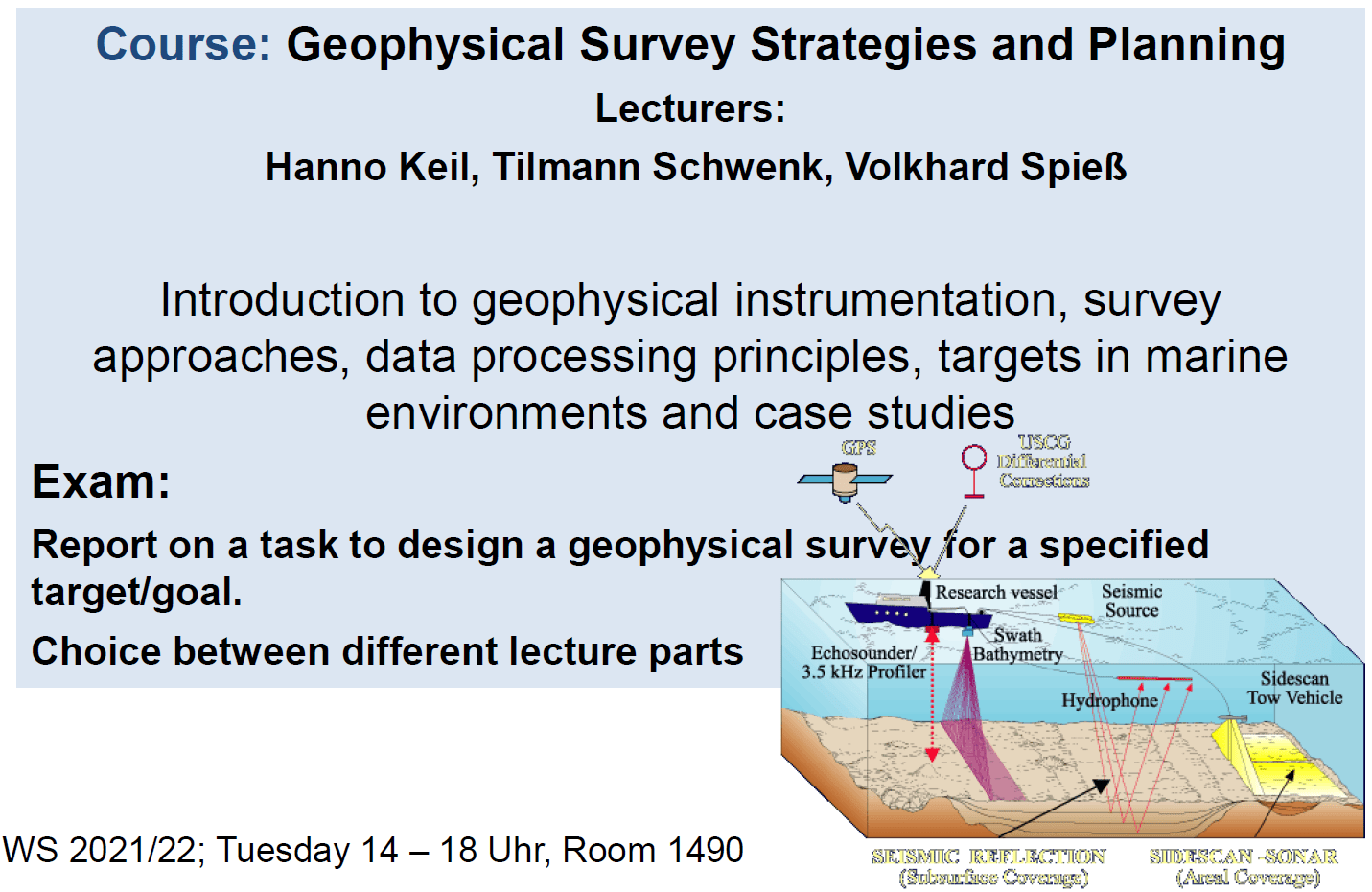Master of Marine Geosciences (MTU)
MSc-1 Geophysical Survey Strategies and Planning (Spiess, Keil)
Marine geophysical surveying is a key tool to investigate and understand processes of sediment transport and deposition, to image structures, to quantify soil properties and treconstruct tectonic movements. Various tools are available, characterized by their frequency and technical design to serve various purposes.
The lectures introduces into the physical principles, types and design of echosounder and seismic instrumentation, characteristic parameters such as resolution and penetration, aspects of positioning and georeferencing and case studies.
>>> MTU Geophysical Surveying >>> FB5 Applied Geophysics: Module / Lecture
MSc-1 Seismic and Acoustic Imaging of Sedimentary Structures (Schwenk, Spiess)
This course focuses on the training of the (integrated) interpretation of all kind of seismo-acoustic data to image the surface and subsurface of sedimentary systems. The principles of measurements using state-of-the-art systems as multibeam sounder, sidescan sonar, sediment echosounder and high-resolution seismic systems are explained to understand their potentials and possible challenges in interpreting the data. Case studies from our research activities are analyzed and interpreted in terms of sedimentary transport and depositional systems.
>>> MTU Seismoacoustic Imaging >>> FB5 Applied Geophysics: Module / Lecture
MSc-1 Sedimentary Structures and Processes at Passive Margins (Schwenk, 30%)
The central content of this course is the transport and deposition of sediment particles on passive margins with respect to external and internal forces, thereby integrating sedimentological, geophysical and actuo-paleontological results. In particular, a variety of gravity-driven mass flows and their deposits as slides, debrites and turbidites are discussed, especially in the environment of submarine canyons and submarine fans. Additionally, the impact of bottom currents on sedimentation and the resulting contouritic deposition are explained. Case studies (including sediment cores) will be analyzed in terms of evolutionary models and a processed-based understanding.
>>> MTU Sediments Passive Margins >>> FB5 Applied Geophysics: Module / Lecture
MSc-2 Sedimentary Structures at Active Margins (Spiess, 50%)
>>> MTU Sediments Active Margins >>> FB5 Sediments Active Margins: Module / Lecture
MSc-2 Gas Hydrates: Formation, Detection, Relevance (Spiess, 20%)
The course introduces into the basics of gas hydrates as they can be imaged and quantified by seismic methods. Like seismic exploration of other resources, quantitative approaches have been developed to locate these resources, to determine the concentration and to budget the volume. Based on MTU seismic data collected in gash ydrate provinces (Congo, Gulf of Mexica, Cascadia Margin), recognition of GHs is trained.
>>> MTU Gas Hydrates >>> FB5 Gas Hydrates: Module / Lecture
MSc-2 Geophysics of Plates, Mantle and Margins (Spiess, 50%)
>>> MTU Geophysics Plates >>> FB5 Geophysics Plates: Module / Lecture
...

x
